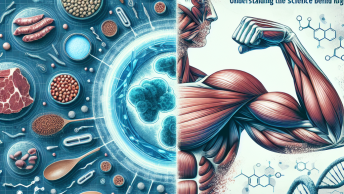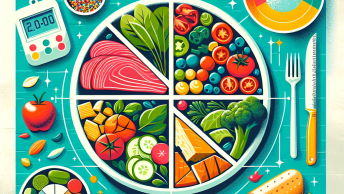When it comes to fat loss, the journey can often seem overwhelming. With countless diets, fad trends, and conflicting advice, it’s easy to get lost in the noise. However, by following a straightforward approach rooted in science and sustainability, you can achieve your fat loss goals. Here, we present ten essential steps to create an effective fat loss diet.
1. Understand Your Caloric Needs
Before embarking on your fat loss journey, it’s crucial to understand how many calories your body requires to maintain, lose, or gain weight. This involves calculating your Basal Metabolic Rate (BMR) and factoring in your activity level. Multiple online calculators can help you with this, but the key takeaway is to create a caloric deficit for fat loss. A daily deficit of 500-1000 calories can typically lead to a sustainable loss of 1 to 2 pounds per week.
2. Prioritize Whole Foods
The cornerstone of any effective fat loss diet is whole, unprocessed foods. These foods are not only nutrient-dense, providing vitamins and minerals that support overall health, but they also tend to be less calorie-dense. Focus on incorporating plenty of fruits, vegetables, whole grains, lean proteins, and healthy fats into your meals. This approach can enhance satiety, helping you feel fuller with fewer calories.
3. Discover Protein Power
Protein plays a vital role in fat loss. Not only does it help build and preserve muscle mass during weight loss, but it also has a higher thermic effect compared to fats and carbohydrates, meaning your body burns more calories processing protein. Aim to include a source of protein in every meal, such as chicken, fish, legumes, eggs, or Greek yogurt. A protein-rich diet can also ward off hunger and cravings.
4. Embrace Healthy Fats
Contrary to popular belief, fats are not the enemy when it comes to fat loss. In fact, including healthy fats in your diet can be beneficial. Sources like avocados, nuts, seeds, and olive oil provide essential fatty acids and promote satiety, making it easier to stick to your caloric goals. Just be mindful of portion sizes, as fats are calorie-dense.
5. Opt for Fiber-Rich Foods
Fiber is your ally in the fight against fat. Foods high in fiber slow digestion and enhance feelings of fullness, which can help control your appetite. Incorporate sources of soluble and insoluble fiber into your meals, such as fruits, vegetables, beans, and whole grains. This will not only assist in weight loss, but also promote better digestive health.
6. Hydrate Wisely
Water often goes underappreciated in fat loss, yet staying hydrated is essential. Drinking water can temporarily boost your metabolism and reduce appetite when consumed before meals. Aim to drink plenty of water throughout the day, and consider swapping sugary beverages for water or herbal teas. This simple change can significantly reduce your overall caloric intake.
7. Mindful Eating Practices
In our fast-paced world, we often eat on autopilot, which can lead to overeating. Practicing mindful eating can transform your relationship with food. Focus on what you eat, savor each bite, and acknowledge when you feel full. By taking your time during meals and eliminating distractions, you can cultivate a healthier, more enjoyable eating experience.
8. Plan Your Meals
Meal planning can be a powerful tool in maintaining a fat loss diet. Taking the time to prepare your meals in advance not only ensures that you stick to healthy options but also helps you avoid impulse eating. Set aside some time each week to plan your meals and snacks, and consider batch-cooking to simplify your week.
9. Maintain Consistency
When it comes to fat loss, consistency is key. Temporary diets may lead to short-term results, but true, lasting change comes from sustainable habits. Instead of aiming for perfection, focus on being consistent with your food choices over time. Embrace a flexible approach, allowing room for treats and occasional indulgences while staying committed to your overall goals.
10. Get Support and Guidance
If you’re feeling lost or unsure about your fat loss journey, don’t hesitate to seek guidance. Connecting with a nutritionist or dietitian can provide personalized support tailored to your individual needs. Additionally, consider joining a community or support group where you can share your experiences while receiving encouragement and advice. For further resources and insights, Click Here to learn more about effective weight loss strategies.
Final Thoughts
Embarking on a fat loss journey is undeniably challenging, but with the right approach and a commitment to sustainable habits, success is within reach. Remember that achieving long-term fat loss requires patience and resilience. By following these ten essential steps, you can create a healthy, balanced diet designed not only for fat loss but for overall well-being. Celebrate your progress, stay positive, and continue to educate yourself along the way. Every step you take gets you closer to your goals.






